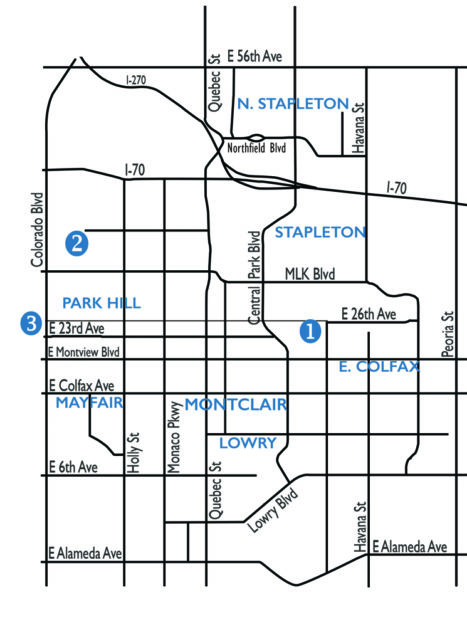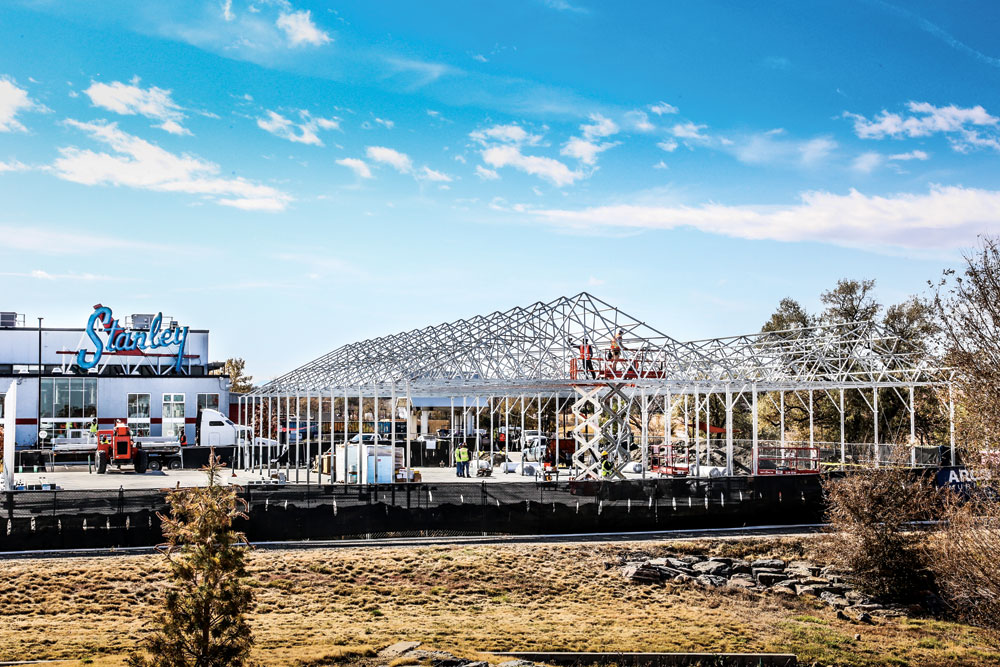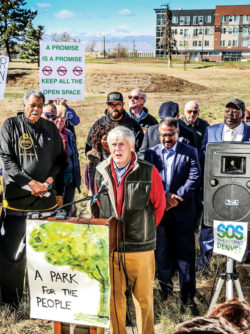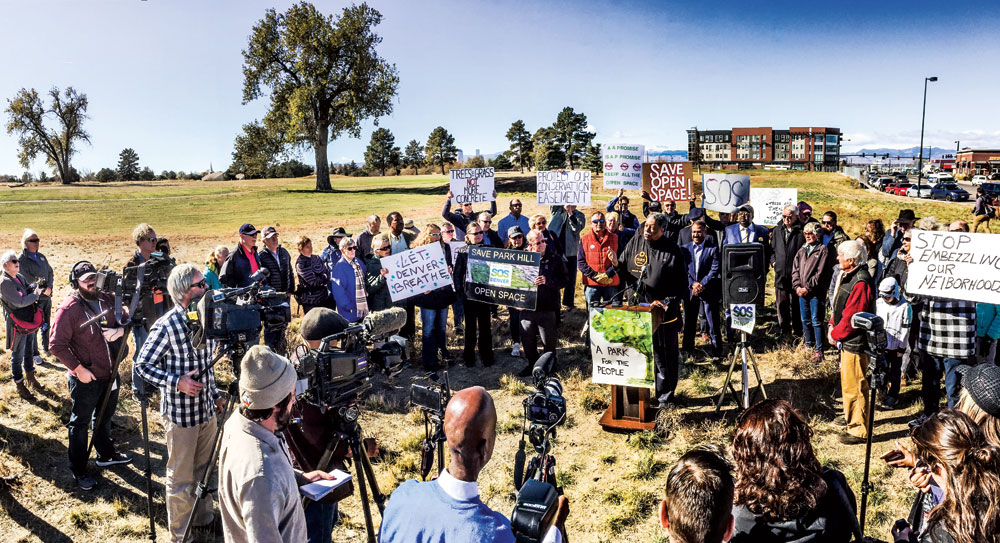 1) Gotham Greens
1) Gotham Greens
Gotham Greens cofounder and CEO Viraj Puri in early October confirmed to the Front Porch that the Brooklyn-based business is building a new 30,000-square foot facility just north of the Stanley Marketplace. The innovative techniques that the greenhouse employs will allow this 1-acre space to yield crops that would require 20 acres using conventional methods. Though the new site will not include a retail space, Puri confirms that the greenhouse—which specializes in greens (lettuces and herbs)—will be supplying high-quality organic produce as well as a line of pestos, dips and salad dressings, to area retailers and restaurants. He anticipates the site opening by early spring 2020. Puri’s cofounder Eric Haley grew up in Greenwood Village and attended Cherry Creek High School. Haley’s wife is also from the Denver area. Look for the article on Gotham Greens in the December issue of the Front Porch.

Construction on the greenhouse for Gotham Greens, located just north of Stanley Marketplace, is proceeding quickly.
2) Open Space Supporters Say Park Hill Land Can’t Legally Be Developed

Woody Garnsey speaks at a press conference/rally organized by Save Open Space Denver on Oct. 22.
Save Open Space (SOS) Denver held a press conference at the Park Hill Golf Course on Oct. 22 to show their opposition to any future development on the 155 acres of land there. They cited a statute passed by the state legislature on June 30 that they believe will make future development on the land impossible.
Real estate developer Westside Investment Partners purchased the land on July 11, 2019 from the Clayton Trust. The sale carried with it a conservation easement purchased by the City for $2 million in 1997, while Wellington Webb was mayor, to perpetually preserve the Park Hill Golf Course land for open space and recreational land uses; Webb spoke at the press conference. “I believe what has made Colorado special and Denver unique is our ability to protect our open space and our land development in Denver itself. The issue is, this land needs to be protected… If a concrete residential commercial development is put here, you can never reclaim this space. It’s gone…Can you imagine New York City without Central Park?”
The statute SOS believes will protect the Park Hill land, HB 19-1264, describes the process for terminating a conservation easement. “If it is determined that conditions on or surrounding a property…change so that it becomes impossible to fulfill its conservation purposes…a court…may, at the request of both the owner of property…and the holder of the conservation easement, terminate…the conservation easement.”
The SOS group points out that the statute would require both the mayor and City Council to agree it would be impossible for the golf course land to fulfill its conservation purposes and they would need to have a judge sign off on that. Park Hill resident and SOS spokesperson Woody Garnsey, concluded, “At this point in time, there is no legitimate reason for anybody to initiate a city planning process for some sort of planning on this property while this conservation easement encumbers the land. That would be a terrible waste of citizen resources and city resources.”

Denver’s former mayor, Wellington Webb, speaks in support of retaining the Park Hill Golf Course land as open space at a press event called by Save Open Space (SOS) Denver On October 22.
With limited time from the press conference to the Front Porch press deadline, we tried, but were unable, to get further information from City Council members or state legislators—or from Westside on whether they believe SOS’ interpretation is incorrect and that they will, in fact, be able to develop the land.
3) Major Fossil Discovery by DMNS Team
“This [fossil discovery] is the biggest paleontological discovery in Colorado since 2010, when construction workers discovered a trove of ice age fossils in Snowmass. From the science side of things, it’s a Richter scale above it,” says James Hagadorn, Denver Museum of Nature and Science (DMNS) Curator of Geology. “It fundamentally changes our understanding of earth history.” Hagadorn, who for many years wrote his “Just the Facts” column in the Front Porch, is part of the DMNS team researching the fossils. Thousands of exceptionally preserved animal and plant fossils found in Colorado Springs show how the world and life recovered after the catastrophic asteroid impact that wiped out the dinosaurs 66 million years ago.
“Blasting our planet, an asteroid triggered the extinction of three of every four kinds of living organisms. While it was a really bad time for life on Earth, some things survived, including some of our earliest, earliest ancestors,” says Dr. Tyler Lyson, the Museum’s curator of vertebrate paleontology in a DMNS press release on Oct. 24. “These fossils tell us for the first time how exactly our planet recovered from this global cataclysm.”
The team’s research is documented in a paper in the current Science magazine and in the NOVA Documentary, “The Rise of Mammals,” streaming on PBS and first broadcast nationally on PBS on Oct. 30. For more information, visit pbs.org/nova. An exhibition about the findings, “After the Asteroid: Earth’s Comeback Story,” opened at the Museum on October 24.


0 Comments